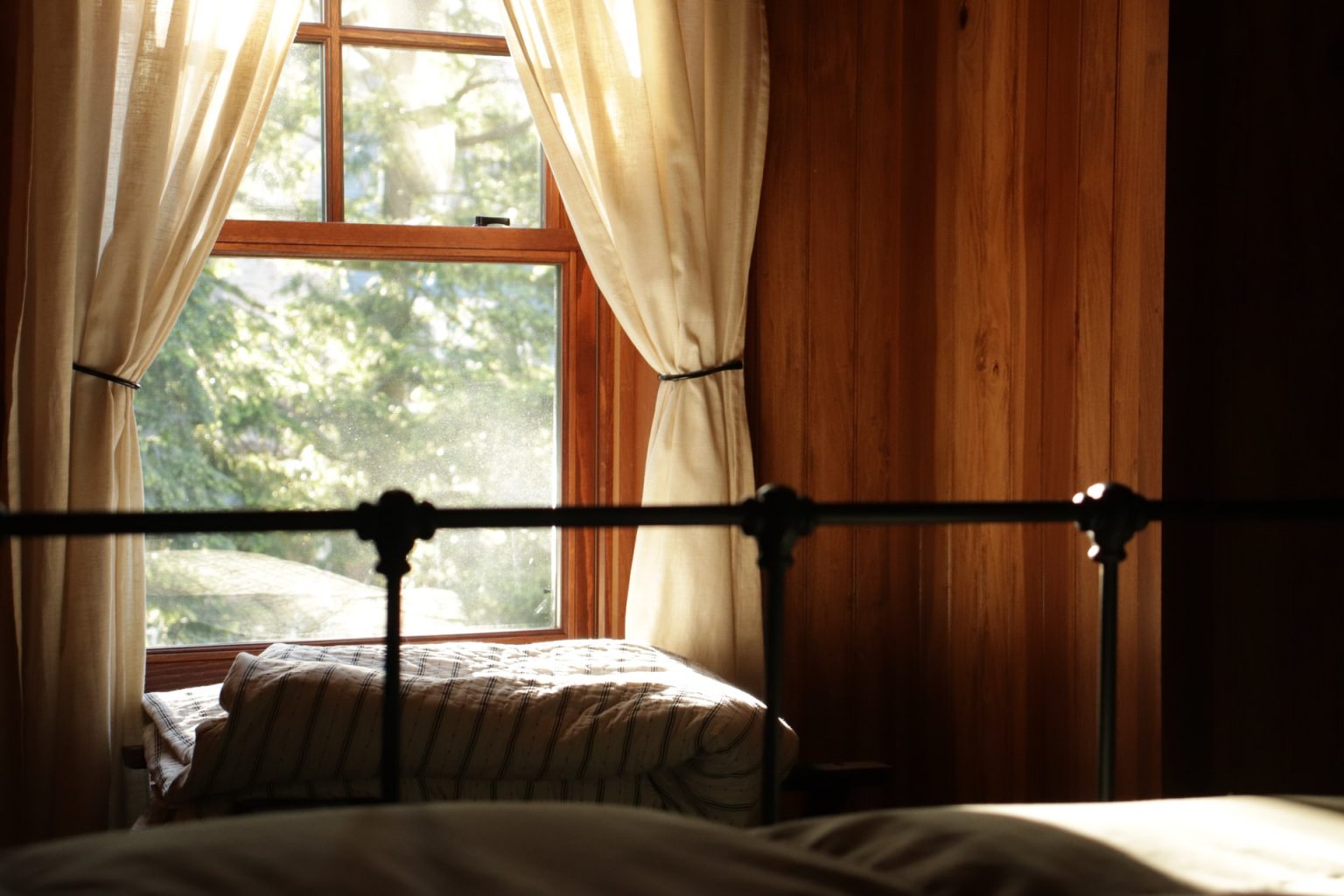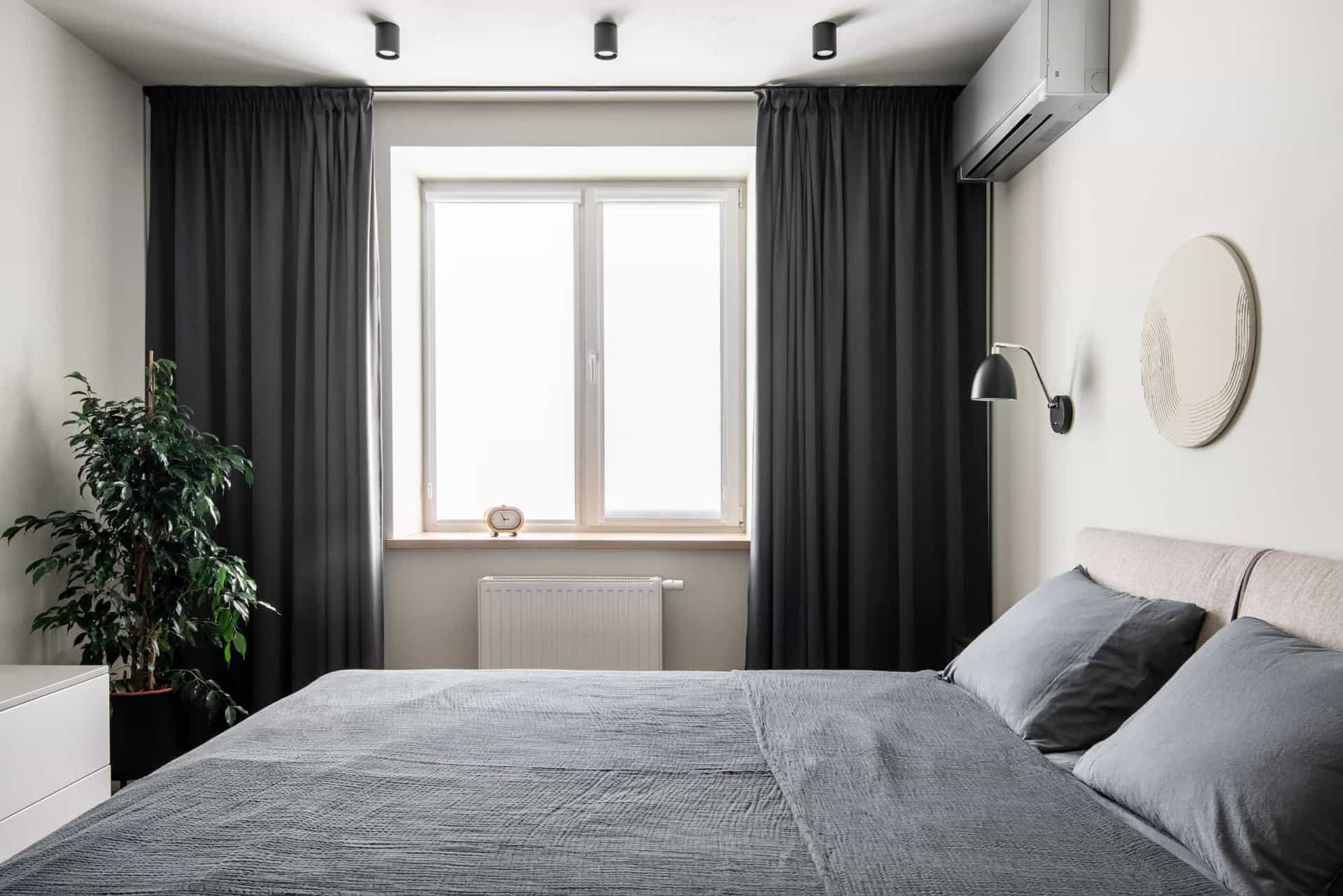Light Blocking Curtains and Blinds

Curtains and blinds are the most popular options for blocking sunlight in bedrooms. They offer a wide range of styles, materials, and functionalities to suit different needs and preferences.
Types of Light Blocking Curtains
Light-blocking curtains come in various styles and materials, each with its own pros and cons. Here’s a breakdown of some popular options:
- Blackout curtains are designed to block almost all light, making them ideal for bedrooms where you want to sleep in or avoid light pollution. They are typically made from thick, tightly woven fabrics like polyester or velvet.
- Room-darkening curtains are similar to blackout curtains but are less effective at blocking light. They are usually made from lighter fabrics like cotton or linen, which can still provide some privacy and reduce glare.
- Thermal curtains are designed to insulate your home and keep it warm in winter and cool in summer. They often have a thick lining that helps to block light and reduce noise.
Types of Light Blocking Blinds
Blinds offer a more contemporary and minimalist look compared to curtains. They are also more versatile, allowing you to control the amount of light entering the room with ease. Here are some popular types of light-blocking blinds:
- Roller blinds are simple and affordable. They are made from a single piece of fabric that rolls up onto a tube. Roller blinds are available in various materials, including blackout fabrics.
- Roman blinds are more elegant than roller blinds. They fold into soft pleats when raised, creating a more tailored look. Roman blinds are also available in blackout fabrics.
- Venetian blinds are made from horizontal slats that can be adjusted to control the amount of light entering the room. While not as effective as blackout curtains, they can still reduce glare and provide some privacy.
- Cellular blinds are also known as honeycomb blinds. They are made from a series of interconnected cells that trap air, providing insulation and soundproofing. Cellular blinds can be effective at blocking light, especially if they are made from blackout fabric.
Choosing the Right Material and Color
Choosing the right material and color for your curtains or blinds is crucial for maximizing light blockage.
- Material: Blackout curtains and blinds are usually made from thick, tightly woven fabrics like polyester or velvet. These materials are effective at blocking light, but they can also be heavy and expensive. If you’re on a budget, you can consider room-darkening curtains made from lighter fabrics like cotton or linen. These fabrics are less effective at blocking light, but they are still a good option for reducing glare and providing some privacy.
- Color: Darker colors are better at absorbing light, making them ideal for light-blocking curtains and blinds. However, darker colors can also make a room feel smaller. If you prefer a lighter and more airy feel, you can consider using lighter colors with a blackout lining.
Installing Curtains and Blinds for Optimal Light Blockage
Proper installation is essential for maximizing light blockage.
- Curtains: Curtains should be hung as close to the ceiling as possible to minimize the amount of light that can seep in from the sides. You can also use blackout curtains or liners to block light from the sides.
- Blinds: Blinds should be installed flush with the window frame to prevent light from entering from the sides. You can also use blackout blinds or liners to block light from the sides.
Window Treatments
Window treatments are a versatile and effective way to block out sunlight, offering a range of options to suit different needs and budgets. They can transform a room’s ambiance, provide privacy, and enhance energy efficiency. Let’s explore some popular window treatment options that can help you achieve a dark and restful bedroom.
Window Films
Window films are thin, adhesive sheets that are applied to the exterior or interior of windows. They are a cost-effective and easy-to-install solution for reducing sunlight and heat. Some window films are specifically designed for light blocking, offering varying levels of opacity. These films work by reflecting or absorbing sunlight, preventing it from entering the room.
Window films can be a practical choice for blocking out sunlight, but it’s important to consider their limitations. They may not be as effective as curtains or blinds in creating complete darkness, and they can sometimes distort the view from the window. Additionally, some window films may have a slight tint or shimmer, which might not be aesthetically pleasing to everyone.
Blackout Shades
Blackout shades are specifically designed to block out almost all light, making them ideal for creating a completely dark environment. They are typically made from thick, opaque materials like polyester or vinyl, which are tightly woven to prevent light from penetrating. Blackout shades are available in various colors and styles, allowing you to choose options that complement your bedroom décor.
Blackout shades are known for their effectiveness in light blocking. They offer a significant reduction in both natural and artificial light, creating a truly dark and peaceful space for sleep. They are also relatively easy to install and maintain, making them a practical choice for many homeowners.
Shutters
Shutters are a classic and stylish window treatment that offer excellent light control. They are typically made from wood, vinyl, or composite materials, and they consist of movable louvers that can be adjusted to control the amount of light entering the room. Shutters are durable, long-lasting, and can add a touch of elegance to any bedroom.
Shutters can be effective in blocking out sunlight, but their effectiveness depends on the type of shutter and how they are installed. Solid shutters, which have no louvers, offer the best light blocking, while shutters with louvers can be adjusted to allow varying levels of light. Shutters can also provide privacy and insulation, making them a versatile and valuable window treatment.
Combining Window Treatments
For maximum light blocking, consider combining multiple window treatments. For instance, you could layer blackout curtains over shutters or blinds. This combination will create a double barrier against sunlight, ensuring a truly dark and restful bedroom.
When combining window treatments, it’s important to choose options that complement each other in terms of style and functionality. For example, you could pair light-filtering curtains with blackout blinds for a more decorative and practical approach to light control.
Room Design and Layout: Best Way To Block Out Sunlight In Bedroom
Best way to block out sunlight in bedroom – Strategic furniture placement and room design can significantly impact light penetration, creating a more conducive sleep environment. By understanding the principles of light blockage and applying them to your bedroom, you can achieve a darker, more restful space.
Rearranging Furniture to Minimize Light Penetration, Best way to block out sunlight in bedroom
Furniture arrangement plays a crucial role in controlling light flow within a room. By strategically positioning furniture, you can create barriers that block out unwanted light, enhancing your bedroom’s darkness.
- Place a tall bookcase or wardrobe in front of windows: This creates a physical barrier that blocks direct sunlight from entering the room. Consider using a bookcase with opaque shelves or a wardrobe with solid doors to maximize light blockage.
- Position your bed away from windows: Moving your bed away from windows, particularly those facing east or west, minimizes the amount of direct sunlight hitting your sleeping area.
- Use a headboard with a high back: A high-backed headboard can help to block light from entering the room, particularly if it’s placed against a wall with a window.
- Use a large rug to cover the floor: A large rug can help to absorb light, making the room feel darker and more inviting.
Blocking Light from Under Doors and Windows
Light often finds its way into a bedroom through gaps under doors and around windows. These seemingly small openings can significantly compromise your sleep environment. Thankfully, simple solutions exist to effectively block out this light.
- Install door sweeps: Door sweeps are inexpensive and easy to install, creating a seal under your door that prevents light from entering. Choose a door sweep made from a dense material like rubber or foam for maximum effectiveness.
- Use blackout curtains or blinds: Blackout curtains or blinds are designed to block out all light, including the light that may seep in through gaps around the edges of windows.
- Place a rolled-up towel or blanket under the door: This temporary solution can help to block light from entering the room, especially if you don’t have a door sweep.
- Install blackout curtains or blinds that extend to the floor: This prevents light from entering the room from the sides of the window.
Designing a Bedroom Layout for Maximum Light Blockage
Designing your bedroom layout with light blockage in mind is crucial for creating a sleep-friendly environment. Consider the following tips to maximize darkness while maintaining comfort.
- Choose a bedroom with windows facing north: North-facing windows receive less direct sunlight throughout the day, minimizing the amount of light entering your bedroom.
- Position your bed against a wall without windows: This reduces the amount of light that can directly hit your sleeping area.
- Create a dark corner for your bed: If you can’t avoid placing your bed near a window, try to create a dark corner by using furniture or room dividers to block out light.
- Consider using a room divider to separate your sleeping area from the rest of the room: This can help to create a more secluded and darker sleeping space.
Using Room Dividers and Partitions for a Darker Sleeping Space
Room dividers and partitions are excellent tools for creating distinct areas within a bedroom, including a dedicated sleeping space. They offer versatility in design and can be used to enhance darkness and privacy.
- Choose a room divider or partition made from a dense material: Materials like wood, fabric, or even bamboo can effectively block out light.
- Place the divider or partition between your bed and the window: This creates a physical barrier that blocks light from entering your sleeping area.
- Consider using a room divider with curtains or blinds: This allows you to control the amount of light entering your sleeping space.
- Use a room divider to create a separate alcove for your bed: This can help to create a more secluded and darker sleeping space.

